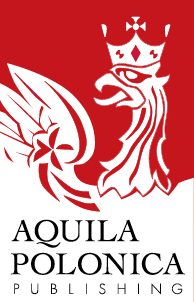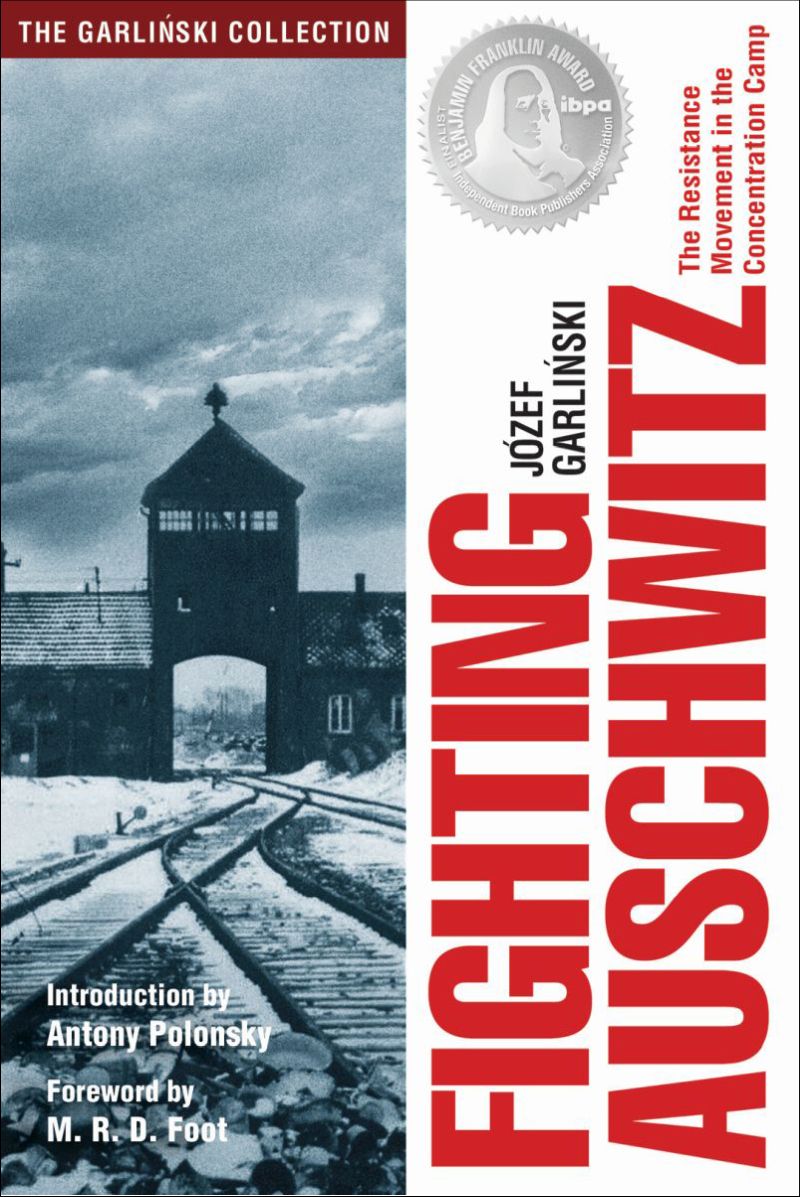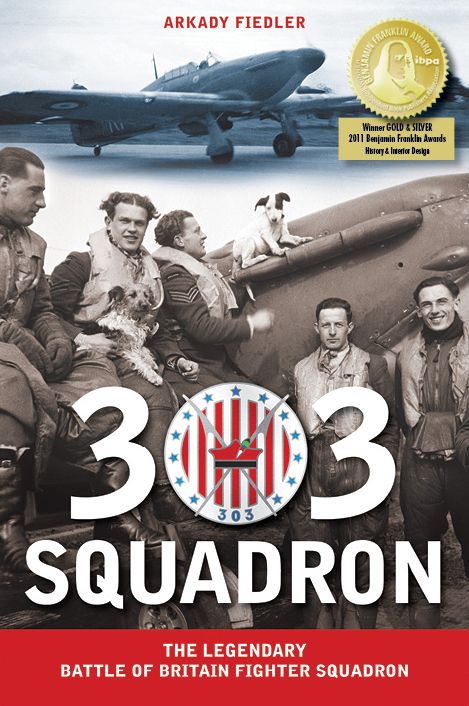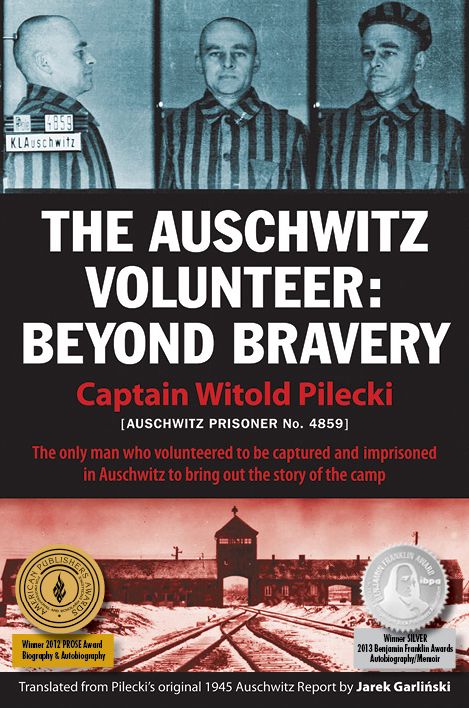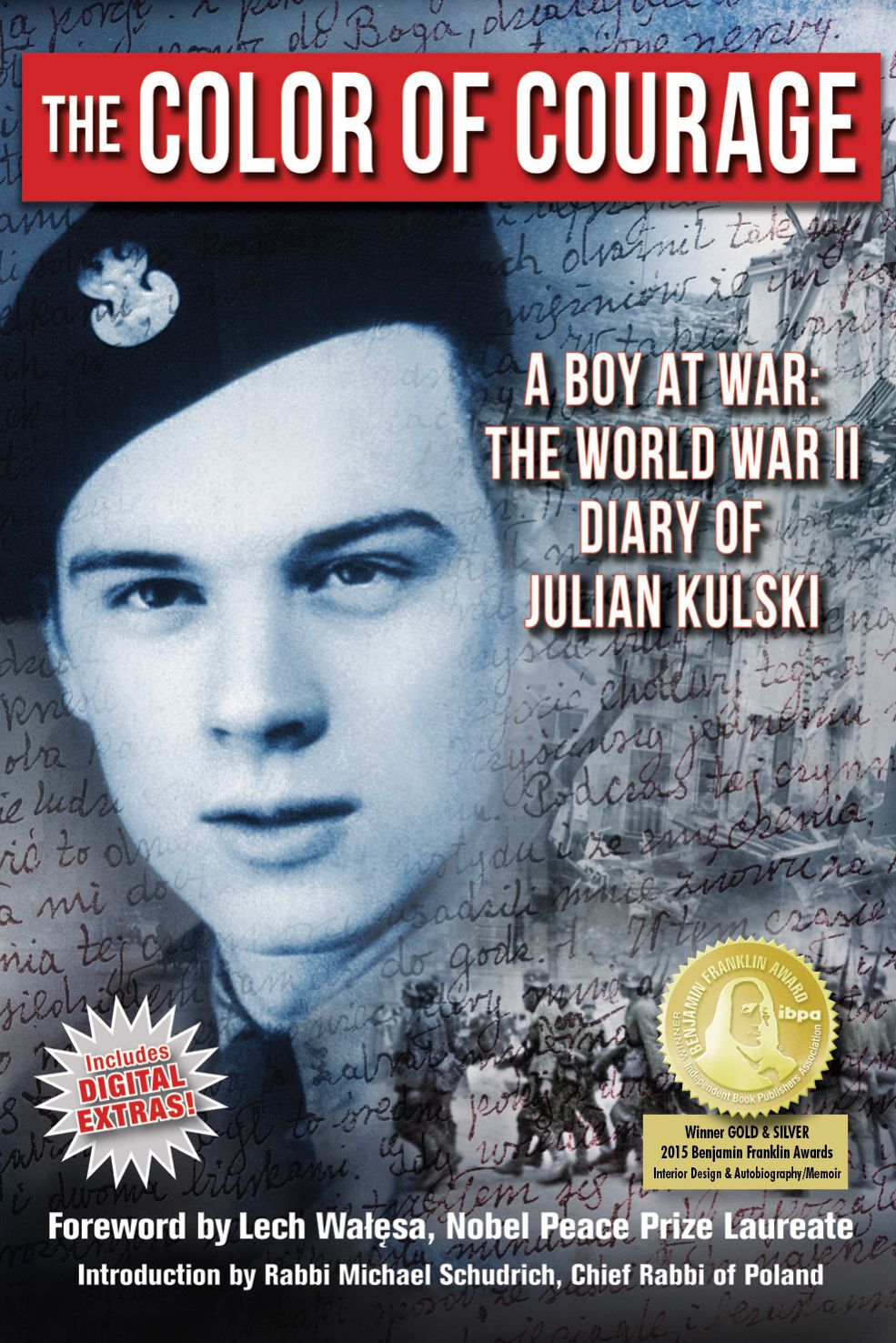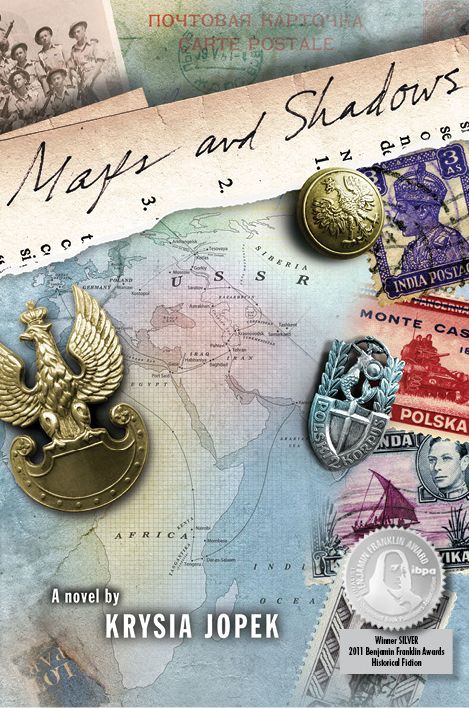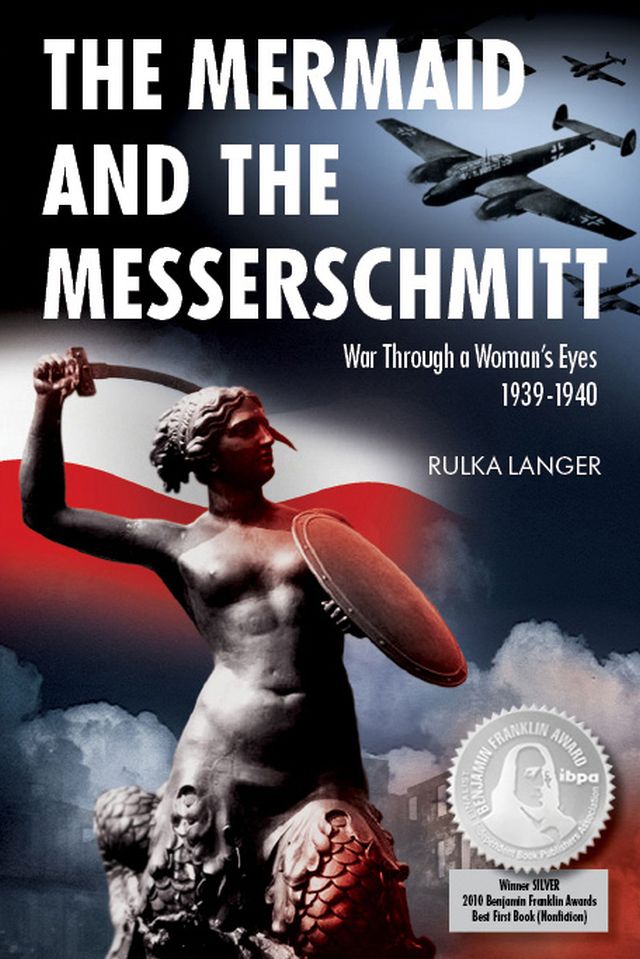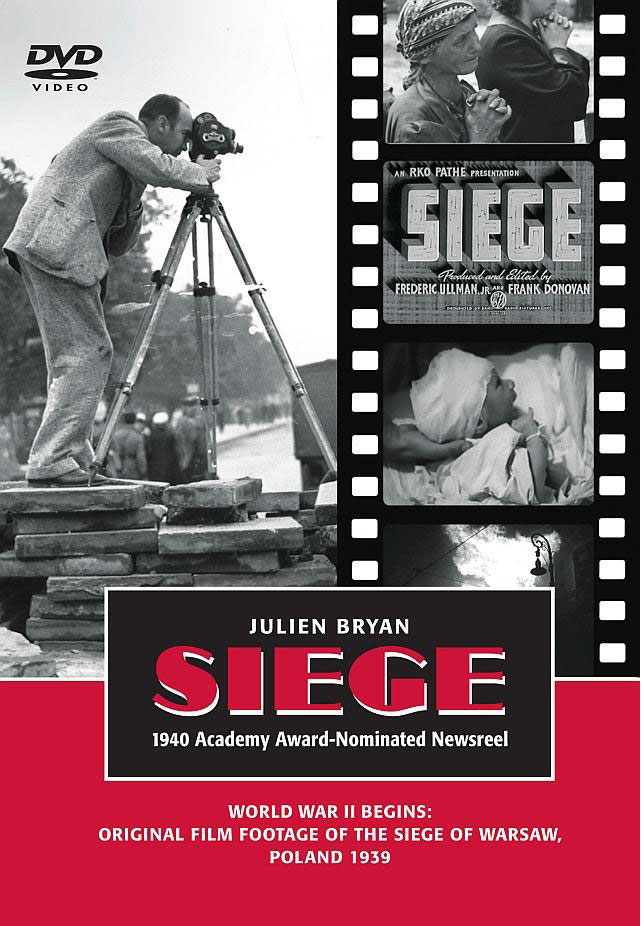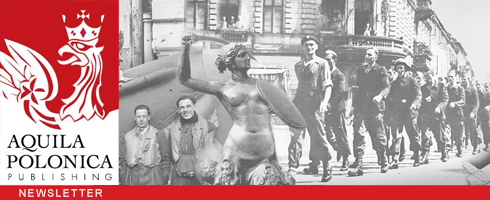The Polish Air Force in Britain
It’s not often, if ever, that the entire air force of a nation moves to a different country—but that’s what happened with the Polish Air Force in World War II.
The Historical Horizon section of our book 303 Squadron: The Legendary Battle of Britain Fighter Squadron by Arkady Fiedler provides an overview of how and why the Polish Air Force moved its base of operations to Britain. It’s quite a story, and we encourage you to take a look at it.
Between July 1940, when the Battle of Britain began, and the end of the war, a total of 15 Polish Air Force squadrons flew with the British Royal Air Force (“RAF”). In addition, a number of individual Polish airmen flew in British RAF squadrons. Overall, Poles were the largest non-British contingent of Allied pilots during the desperate days of the Battle of Britain in the summer and fall of 1940.
 The importance of the Polish pilots during the Battle of Britain was summed up by British Air Chief Marshal Sir Hugh Dowding:
The importance of the Polish pilots during the Battle of Britain was summed up by British Air Chief Marshal Sir Hugh Dowding:
“Had it not been for the magnificent material contributed by the Polish squadrons and their unsurpassed gallantry, I hesitate to say that the outcome of the battle would have been the same.”
We’re honoring those 15 Polish squadrons with a number of products in our store that feature their squadron insignia — mugs and mouse pads, shirts and hats, tote bags, patches, coasters and stickers. We’ve also collected these squadron insignia into a fabulous poster which you can order by clicking here.
![]() 300 SQUADRON — nickname ‘Masovian.’ Bomber squadron. Operational from July 1940 to December 1946.
300 SQUADRON — nickname ‘Masovian.’ Bomber squadron. Operational from July 1940 to December 1946.
![]() 301 SQUADRON — nickname ‘Pomeranian.’ Operated as a bomber squadron, as well as undertaking special duties and transport. Operational from July 1940 to December 1946.
301 SQUADRON — nickname ‘Pomeranian.’ Operated as a bomber squadron, as well as undertaking special duties and transport. Operational from July 1940 to December 1946.
![]() 302 SQUADRON — nickname ‘City of Poznań.’ Day fighter squadron. Operational from July 1940 to December 1946.
302 SQUADRON — nickname ‘City of Poznań.’ Day fighter squadron. Operational from July 1940 to December 1946.
![]() 303 SQUADRON — the most famous of the 15 Polish Air Force squadrons that flew with the RAF in World War II. This squadron, nickname ‘Kościuszko’ and also ‘City of Warsaw,’ was a day fighter squadron. Operational from August 1940 to December 1946. Check out our award-winning book 303 Squadron: The Legendary Battle of Britain Fighter Squadron by Arkady Fiedler to learn more about this famous Polish fighter squadron. Excerpted in Smithsonian’s Air & Space Magazine. “About as exciting as it gets,” says the Washington Times.
303 SQUADRON — the most famous of the 15 Polish Air Force squadrons that flew with the RAF in World War II. This squadron, nickname ‘Kościuszko’ and also ‘City of Warsaw,’ was a day fighter squadron. Operational from August 1940 to December 1946. Check out our award-winning book 303 Squadron: The Legendary Battle of Britain Fighter Squadron by Arkady Fiedler to learn more about this famous Polish fighter squadron. Excerpted in Smithsonian’s Air & Space Magazine. “About as exciting as it gets,” says the Washington Times.
![]() 304 SQUADRON — nickname ‘Silesian.’ Operated as a bomber squadron, as well as undertaking anti-submarine and transport duties. Operational from August 1940 to December 1946.
304 SQUADRON — nickname ‘Silesian.’ Operated as a bomber squadron, as well as undertaking anti-submarine and transport duties. Operational from August 1940 to December 1946.
![]() 305 SQUADRON — nickname ‘Wielkopolsk.’ Bomber squadron. Operational from August 1940 to December 1946.
305 SQUADRON — nickname ‘Wielkopolsk.’ Bomber squadron. Operational from August 1940 to December 1946.
![]() 306 SQUADRON — nickname ‘City of Toruń.’ Day fighter squadron. Operational from August 1940 to December 1946.
306 SQUADRON — nickname ‘City of Toruń.’ Day fighter squadron. Operational from August 1940 to December 1946.
![]() 307 SQUADRON — nickname ‘City of Lwów.’ Night fighter squadron. Operational from August 1940 to December 1946.
307 SQUADRON — nickname ‘City of Lwów.’ Night fighter squadron. Operational from August 1940 to December 1946.
![]() 308 SQUADRON — nickname ‘City of Kraków.’ Day fighter squadron. Operational from September 1940 to December 1946.
308 SQUADRON — nickname ‘City of Kraków.’ Day fighter squadron. Operational from September 1940 to December 1946.
![]() 309 SQUADRON — nickname ‘Czerwieńska.’ Operated as a day fighter squadron, as well as undertaking Army cooperation and fighter-reconnaissance duties. Operational from October 1940 to December 1946.
309 SQUADRON — nickname ‘Czerwieńska.’ Operated as a day fighter squadron, as well as undertaking Army cooperation and fighter-reconnaissance duties. Operational from October 1940 to December 1946.
![]() 315 SQUADRON — nickname ‘Dęblin’ (for the town where the Polish Air Force College was, and still is, located). Day fighter squadron. Operational from January 1941 to December 1946.
315 SQUADRON — nickname ‘Dęblin’ (for the town where the Polish Air Force College was, and still is, located). Day fighter squadron. Operational from January 1941 to December 1946.
![]() 316 SQUADRON — nickname ‘City of Warsaw.’ Day fighter squadron. Operational from February 1941 to December 1946.
316 SQUADRON — nickname ‘City of Warsaw.’ Day fighter squadron. Operational from February 1941 to December 1946.
![]() 317 SQUADRON — nickname ‘City of Wilno.’ Day fighter squadron. Operational from February 1941 to December 1946.
317 SQUADRON — nickname ‘City of Wilno.’ Day fighter squadron. Operational from February 1941 to December 1946.
![]() 318 SQUADRON — nickname ‘City of Gdańsk.’ Fighter-reconnaissance squadron. Operational from April 1943 to December 1946.
318 SQUADRON — nickname ‘City of Gdańsk.’ Fighter-reconnaissance squadron. Operational from April 1943 to December 1946.
![]() 663 SQUADRON — Artillery-spotting squadron. Did not have a nickname. Operational from September 1944 to October 1946.
663 SQUADRON — Artillery-spotting squadron. Did not have a nickname. Operational from September 1944 to October 1946.
![]() POLISH AIR FORCE CHECKERBOARD — The red-and-white checkerboard is the national marking (or roundel) for aircraft of the Polish Air Force, and appears on every Polish military plane in addition to any individual squadron insignia.
POLISH AIR FORCE CHECKERBOARD — The red-and-white checkerboard is the national marking (or roundel) for aircraft of the Polish Air Force, and appears on every Polish military plane in addition to any individual squadron insignia.
The checkerboard was officially adopted as Poland’s national marking in 1918, shortly after Poland regained its independence following World War I. In the original design, which was the official Polish Air Force marking during World War II, the red squares appear in the upper left and lower right quadrants — although on an occasional plane during the war the red and white squares were swapped. The placement of the red and white squares was officially changed in 1993, and since that time the white squares have appeared in the upper left and lower right.
